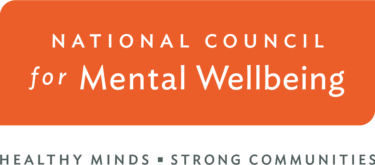Many members of Congress have distributed press releases over the past few days about receiving grants for their communities from the Substance Abuse and Mental Health Services Administration (SAMHSA), which is distributing $3 billion in American Rescue Plan funding.
The National Council has also applauded this historic and significant funding because of the important role it plays in preserving a safety net at such a critical time for the country.
These important grants support mental health and substance use disorder treatment, and they represent a much-needed investment because so many communities continue to cope with an unrelenting overdose crisis.
Provisional data from the Centers for Disease Control and Prevention’s (CDC) shows an estimated 90,000 people died from an overdose in the 12-month period ending September 2020. It’s unlikely that trend will reverse itself anytime soon.
People in communities throughout the country require treatment for opioid use disorders, excessive alcohol consumption or other substance use disorders including stimulants like cocaine or methamphetamine.
While the press releases provide good news about funding to address a deadly crisis, there’s much more to the story. These one-time grants simply won’t get the job done.
Our nation needs a more effective strategy if we hope to overcome the overdose crisis. That includes both more funding and sustained funding. It’s also important that funding is available with fewer strings attached so states have greater flexibility to apply money to problems unique to communities in their states.
Increasing polysubstance use provides an argument for greater flexibility. According to a report from the Bipartisan Policy Center released last September, Tracking FY2019 Federal Funding to Combat the Opioid Crisis, “rates of polysubstance-involved overdose deaths are increasing, along with rates of methamphetamine and cocaine use. In addition, over the last few years there have been increasing rates of overdose deaths in communities of color.”
That’s one reason the organization wisely recommends removing restrictive funding language from federal grants to allow spending on substance use disorders generally, including emerging drug use trends such as methamphetamine and cocaine.
Beyond block grant funding, Medicaid also provides an opportunity to improve treatment for those with substance use disorder challenges.
A new report by the Center for Budget Policy and Priorities urges regulators to give states greater flexibility to use Medicaid to address substance use disorders among low income people. This is more important than ever as we look to eradicate inequality and racial injustice across the health care system because Medicaid helps to address substance use disorder across low income and communities of color.
There are so many avenues we can take as a nation to improve care for those with substance use disorders. But any path we take must begin with providing sustained, long-term funding with fewer strings attached.
What we can’t do is continue with the status quo because we have too much to lose.
In an op-ed earlier this month, acting director of the Office of National Drug Control Policy Regina LaBelle and Rochelle P. Walensky, director of the Centers for Disease Control and Prevention, wrote that just 18% of people with opioid use disorder reported receiving medication-based treatment in the past year.
We’ve made some important policy changes since the beginning of the pandemic to address the overdose crisis. Implementing telehealth has proven effective, and regulators should keep those changes in place in perpetuity. The acknowledgment by the Office of National Drug Control Policy that harm reduction provides an opportunity to reduce overdoses and overdose deaths represented a commonsense policy change. Revisions to the X-waiver will expand access to buprenorphine.
Now we must change how the federal government funds substance use disorder treatment so we can make long-term investments in life-saving programs.



